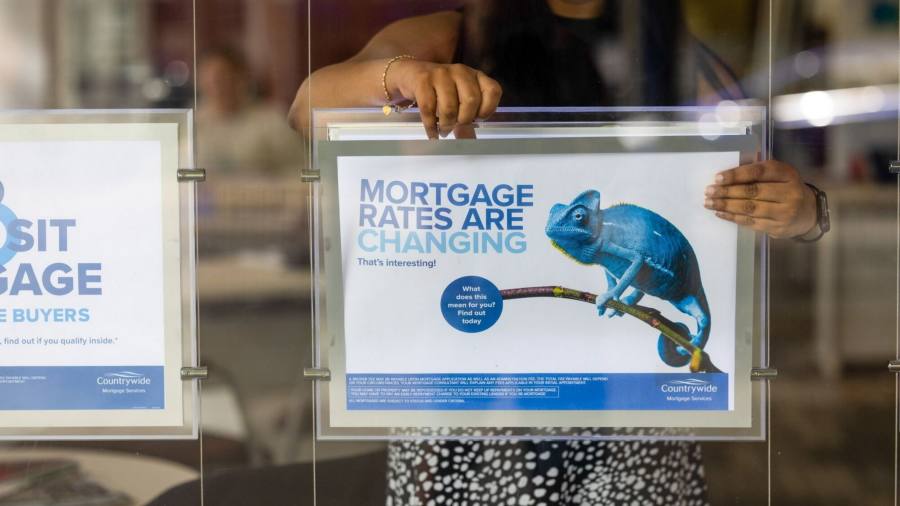
Receive free UK interest rates updates
We’ll send you a myFT Daily Digest email rounding up the latest UK interest rates news every morning.
The average cost of a five-year fixed-rate UK mortgage has hit 6 per cent for the first time since November, just as banks face growing scrutiny over whether they are doing enough to ease the pressure on consumers.
Top bankers at HSBC, NatWest, Lloyds and Barclays have been called to a meeting with the UK’s financial watchdog on Thursday to address the gap between spiralling mortgage costs and savings rates.
The Bank of England has lifted interest rates to a 15-year high of 5 per cent as it battles to bring inflation under control. The steep jump in mortgage rates, but smaller increase in savings rates, has led to accusations that banks are profiteering amid a cost of living crisis.
According to data provider Moneyfacts, the average rate for a five-year mortgage hit 6.01 per cent on Tuesday, the highest level since the aftermath of former primer minister Liz Truss’s ill-fated “mini” Budget.
By contrast, the average easy access savings rate available across all banks is 2.45 per cent, according to Moneyfacts. The rates offered by the four biggest high street banks, Lloyds, NatWest, Barclays and HSBC, range from 0.9 per cent to 1.75 per cent.
According to people familiar with the matter, the Financial Conduct Authority and the executives are planning to discuss the pricing of cash savings and how banks communicate with their customers on rates. The meeting could result in a “savings charter”, or set of commitments, the people added.
Jeremy Hunt, the chancellor, wants to lift the rates on savings accounts, both to help ease the pressure on households’ straitened finances but also to cool spending and assist the central bank in its fight against inflation.
Thursday’s meeting is the latest move by the FCA to address concerns that banks are failing to fully pass on the benefits of higher rates to savers even as the lenders benefit from higher borrowing costs. The regulator wrote to bank chiefs about the issue in February.
As they confront growing criticism, banks have pointed to the much higher rates available on savings accounts that require consumers to lock their money up for two years. According to Moneyfacts, the average rate on such accounts is 4.77 per cent.
But some analysts point out that the pool of people able to lock money up will be much smaller.
“The majority of customers have easy access accounts,” said Andrew Hagger, a personal finance expert at MoneyComms. Fixed-rate savings accounts would require people “to be happy tying their money up for a length of time during a cost of living crisis,” he said.
Some shareholders on Tuesday defended the banks, which are expected to be hit by an increasing amount of bad debts as the economy slows.
“The government and regulators were quite happy for savers and banks to suffer over a decade of zero interest rates,” said Richard Buxton, UK fund manager at Jupiter. “As rates rise both savers and banks can benefit, but any intervention to cap margins in a competitive industry is a dangerously slippery slope.”
He added: “Profiteering is an emotive expression at odds with returns on capital.”
The spectre of the FCA intervening on pricing products has led to warnings that the regulator risks overreaching.
“It is concerning that the FCA appears to be bowing to political pressure and overreaching the current Treasury recommendation to have regard to the government’s economic policy when advancing its objectives,” said Simon Morris, of law firm CMS, adding that “telling banks how to price their products” was not captured by regulators’ statutory duty to ensure banks were “well run and adequately capitalised”.
Michelle Kirschner, a lawyer at Gibson Dunn, said: “There is a suggestion in the market that a failure to pass on better savings rates to savers is a failure to treat customers fairly. This conflates fairness with price. The FCA is not a price regulator and it is ultimately difficult to see how the FCA could intervene to mandate that banks pass on better savings rates to their savers.”